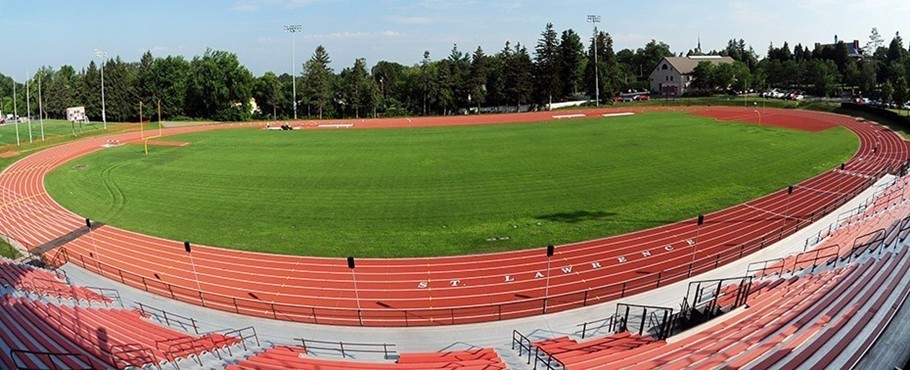Photo via University Communications
“Runway! Sandpit! Board!” I yelled while standing in the indoor track, pointing at the track obstacles that were so new to me, and attempting to familiarize myself with them with the help of former decathlete Will Merchant. My goal in this endeavor was to learn about track and field events at the collegiate level and how college athletes at SLU balance their academics with athletics.
I asked Merchant to walk me through the typical track and field practice of a decathlete. We began by running two laps around the indoor track as a warm-up. Subsequently, we did lunges and squats and stretched.
The first event I tried to tackle was the long jump. Merchant strongly stressed that an important goal to have as I jumped into the sandpit was to swing my feet forward under me as I jumped into the air, causing me to land sitting in the sandpit with my feet in front of me. He also taught me that when I leave the sandpit it is important that I do not step back toward the platform I jumped from. This is because the distance jumped is measured between the jumper’s take-off spot and the closest point in the sandpit that the jumper touches, even if the jumper touches that point after they have completed their jump and are simply touching that particular point as they exit the sandpit.
My graceful movements, which I am so used to employing at practices as a second-year dance team member, did not translate well into explosive jumping motion. Will advised me to throw all of my body, including my arms and my dominant knee upward motion. My first attempt at an explosive jump looked more like a gentle leap because of my dance experience. As of right now, my long jump career consists of silly flailing when it should consist of aggressive explosive jumping with a purpose and force. To conclude the typical track and field practice, we cooled down with leg raises and ab exercises.
After my attempt at learning a single event from a decathlete, I don’t believe that a fair amount of credit is given to collegiate athletes. Not only does the skill level need to be present, but the dedication must be evident too. Track and field practices take place every day beginning at 4 p.m. and typically not ending until 6 p.m. I find it hard enough to find time to get my work in on shedule without being a track star, so I can’t imagine the amount of stress the athletes must be under! They’re expected to perform difficult tasks such as the long jump, which I looked embarrassing trying, while they pass their classes. They can’t allow their dedication to the team affect their grades. Not to mention, they are expected to travel long distances almost every weekend to compete.
I learned many new vocab terms, such as sandpit and runway, and that to be a successful competitive long jumper at the collegiate you must use force and aggression while jumping, as opposed to gentle leaping, which I demonstrated. However, the biggest lesson learned was how much dedication is required to be a part of a such a strong team and how much of this hard work and commitment is overlooked.



